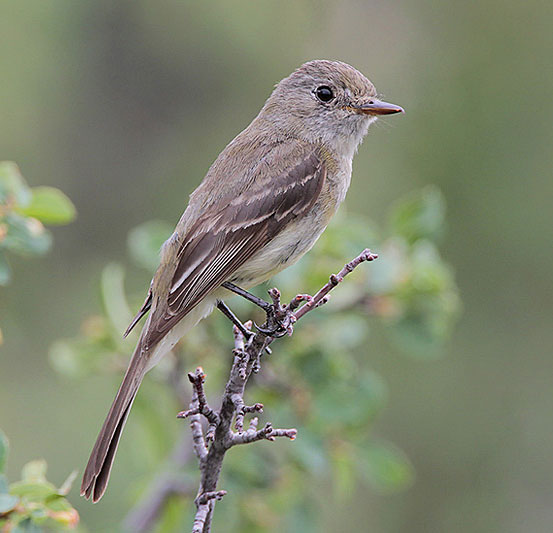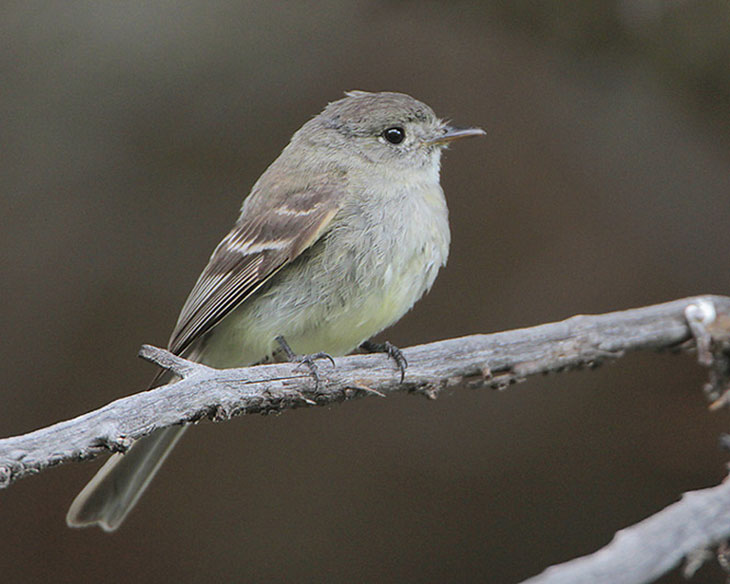A migratory flycatcher of the western U.S. and Canada, the Dusky Flycatcher belongs to the genus Empidonax, which is made up of a number of hard to identify species. The Dusky Flycatcher’s diet of aerial insects makes it vulnerable to spring and summer cold snaps or heavy precipitation that can reduce or eliminate its food supply.
Only female Dusky Flycatchers incubate eggs, and some males bring food to their mate. The more food he brings, the more time the female spends incubating. This incubation feeding likely strengthens the pair bond, and may also increase nest success.
On this page
Description of the Dusky Flycatcher
BREEDING MALE

Image © Greg Lavaty
The Dusky Flycatcher is grayish or brownish-olive above with an olive breast, a white eye ring, and whitish wing bars. The base of the lower mandible is orange but the tip is dark.
Female
Sexes similar.
Seasonal change in appearance
None.
Juvenile
Juveniles resemble adults but have tawnier wing bars.
Habitat
Open forest and brushy slopes.
Diet
Insects.
Behavior
Forages by flying from a perch to capture flying insects.
Range
Breeds in a large portion of western North America and winters in Mexico and Central America.
Fun Facts
Thinning of coniferous forest stands by logging can create habitat for Dusky Flycatchers.
Males have a flight song display that is initiated from a treetop perch and involves a circling flight.
Vocalizations
The song has three distinct parts, and calls include “whit” notes, rattles, and “wheak” sounds.
Similar Species
- Very similar to Hammond’s Flycatcher, which has a slightly shorter bill and tail.
Nesting
The nest is a cup of grasses and other plant material placed in the fork of a shrub.
Number: 4
Color: Whitish.
Incubation and fledging: ?
– Young hatch at 15-16 days.
– Young fledge (leave the nest) 15-20 days after hatching but remain with the adults for some time.


